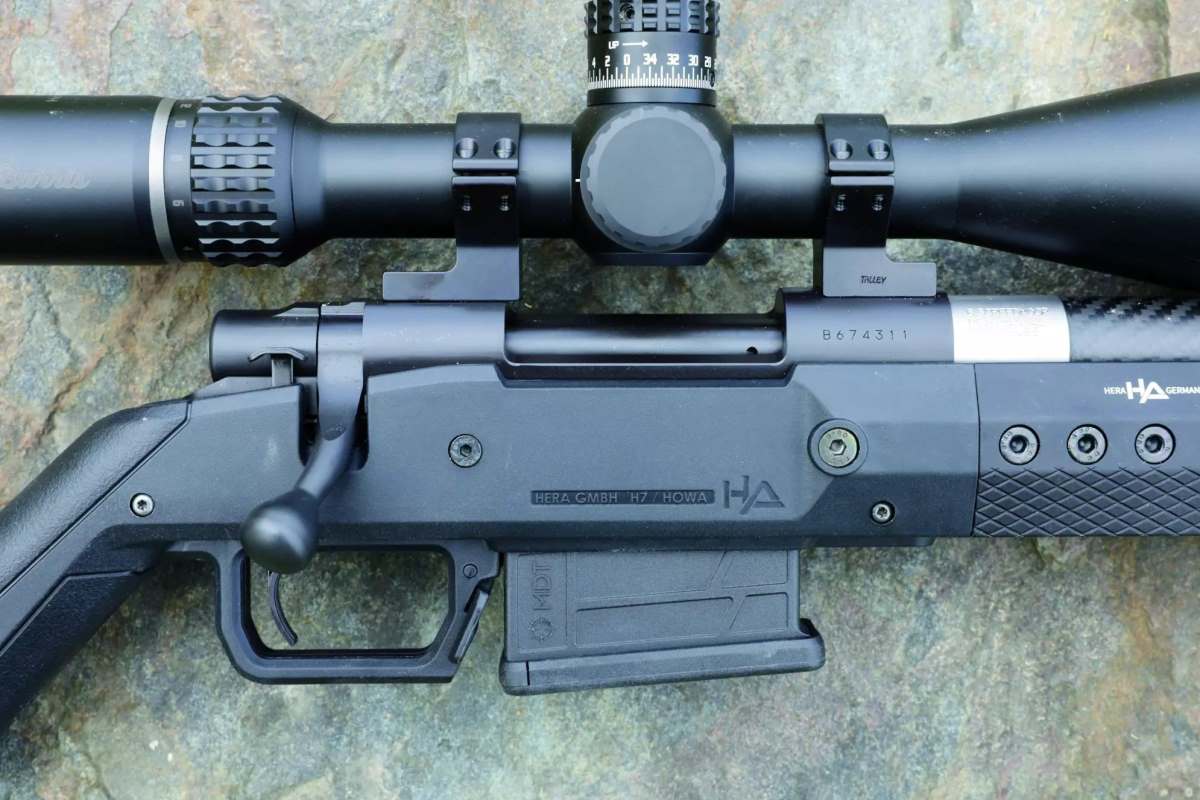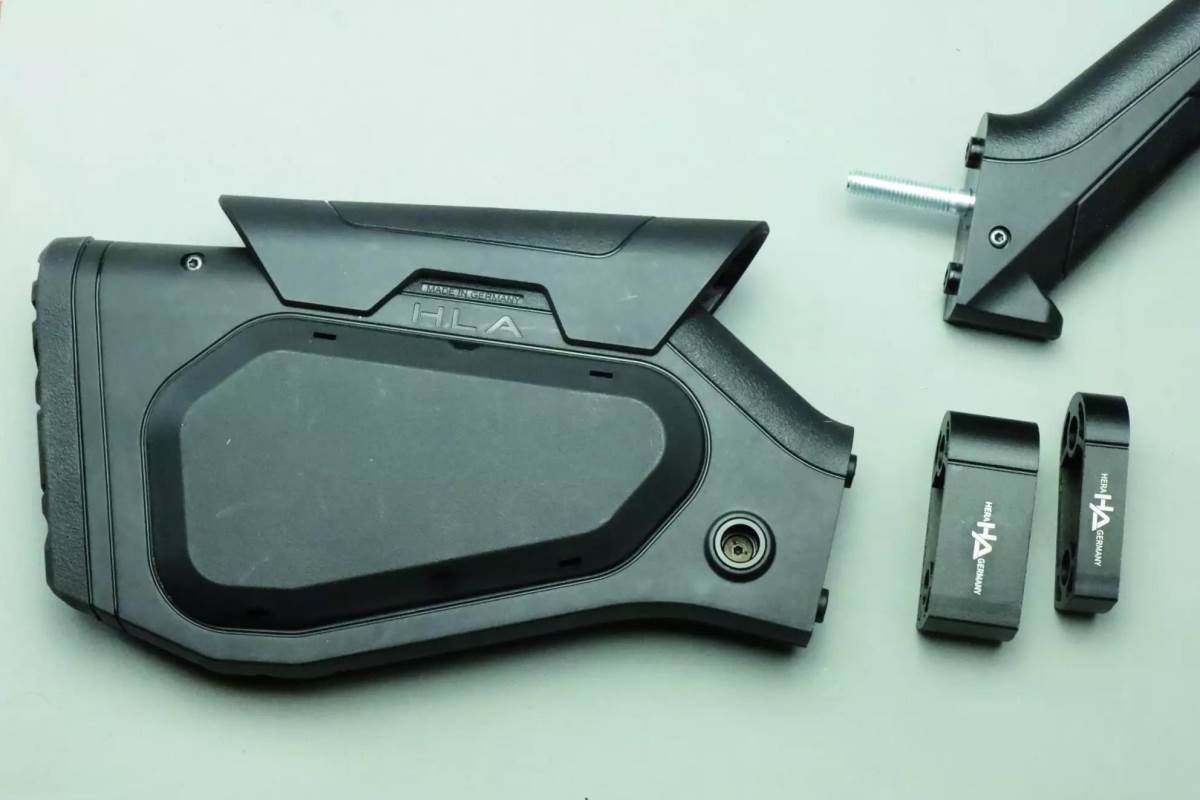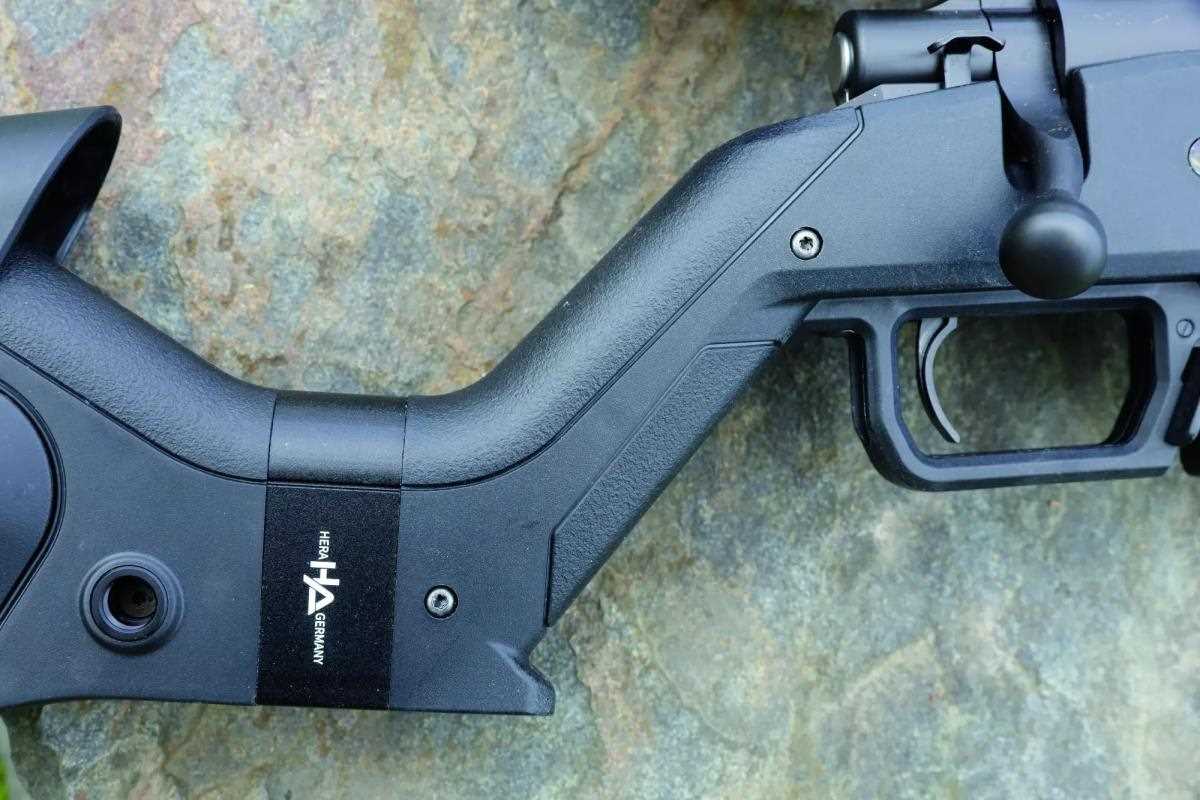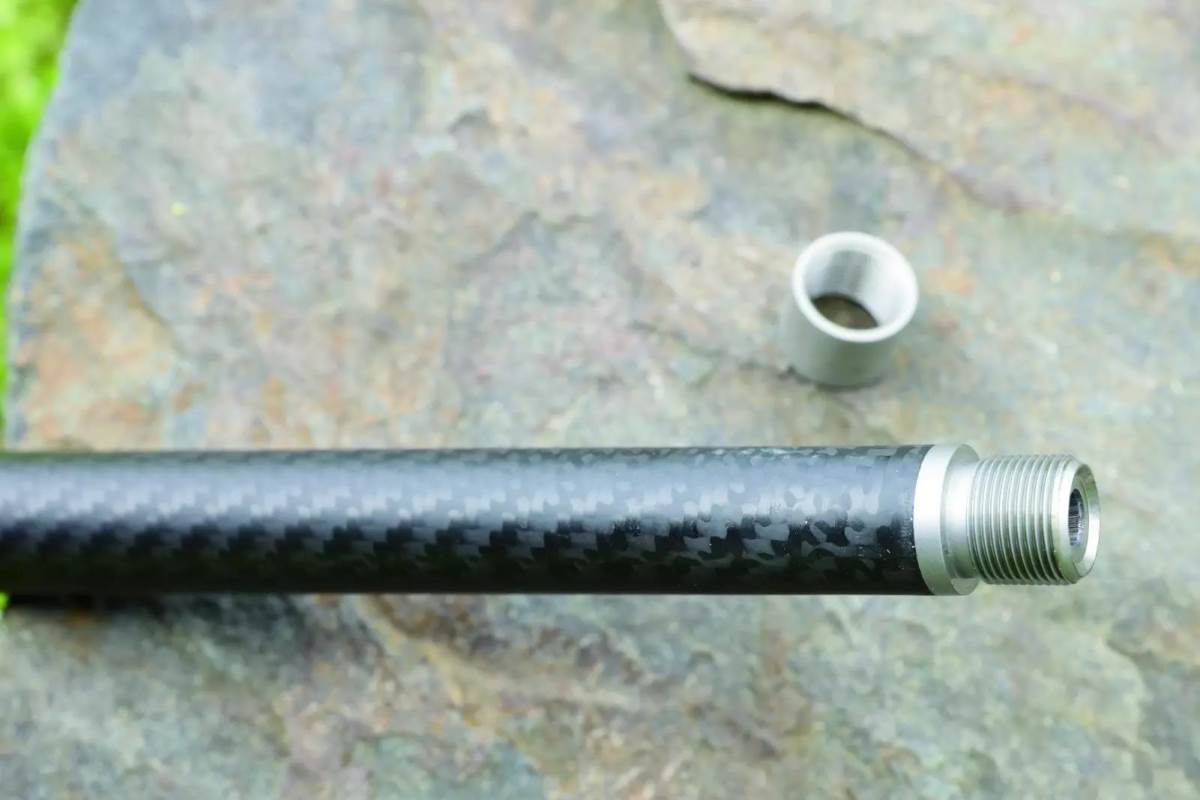
To say that long-range shooting and hunting are popular is about as prophetic as proclaiming that the internet is here to stay. Each year more and more shooters are purchasing a long-range shooting setup, and it’s rare to travel to any range in America without seeing at least one rifle that looks like it belongs on the PRS circuit. With the surge in popularity of long-range shooting there has come a bevy of rifles designed specifically for this purpose, but perhaps none offers as many premium features for under $1,500 as Howa’s new Hera H7.
As the name suggests, the Howa Hera H7 mates a Howa 1500 barrel action to Hera’s outstanding H7 chassis, and in doing so the company has developed a rifle that offers many premium features yet remains relatively affordable. These guns are available with three different Hera H7 chassis colors and a choice of 22-inch standard contour steel, 24-inch heavy contour steel or 24-inch carbon-fiber-wrapped barrels.
All three barrel contours have threaded muzzles. The 22-inch barrel comes with a 1/2×28 thread pattern while both the heavy contour and carbon-fiber barrels feature a 5/8×24 thread pattern.
Central to the Hera H7 rifle is Howa’s vaunted 1500 action, which has been in production in Japan since 1979 and has become one of the most popular action designs for custom rifle builders because it offers a robust, reliable design at an affordable price. In the past, Weatherby, Mossberg and other brands have used the action as the basis for their own rifle designs with excellent results.
Utilizing a dual-lug action and push-feed bolt with a plunger-type ejector, the Howa 1500 is similar—at least in basic design—to the Remington 700 action, which is good company to keep. And almost since its introduction to the States, rifle makers have been building excellent guns on the affordable, reliable 1500 action.
That’s not to say the 1500 is a clone of Remington’s 700, and the two actions have notable differences. First, the Howa uses an M16-style extractor in place of the Model 700’s smaller spring-powered extractor. Both actions are cylindrical, but the 1500 features a flat base with integral recoil lug.

The safety designs are different. Whereas the Remington 700 comes with a two-position rocker-type safety, the Howa features a three-position trigger-lock rocker safety. The Howa compares well—perhaps even favorably, in some aspects—to the Remington 700.
After the “trigger renaissance” of the early 2000s, factory rifles with heavy, creepy triggers were no longer deemed acceptable—a change brought about at least in part by the release of Savage’s AccuTrigger design in 2002. In 2011 Howa released its own safe, light trigger design. Dubbed the Howa Actuator Controlled Trigger (HACT), this two-stage design lacked the prominent blade that the AccuTrigger popularized.
The HACT design requires some light take-up before hitting the wall, at which point there is minimal rearward pressure with no discernible creep. The trigger is user-adjustable down to about 2.5 pounds.
There’s no doubt that the 1500 is an excellent action, and many shooters—myself included—have learned that they are capable of exceptional accuracy. But long-range shooters want an adjustable stock purpose-built for the task, and the Hera H7 provides just that.
The stock itself is made from fiberglass-reinforced polymer and is therefore extremely light and durable. Hera H7s include a bedding block, and the fore-end is made from aluminum as well. The fore-end is wide, about 2.25 inches, and the bottom portion is flat.
M-Lok attachment points run the length of the fore-end base and are also present along the 10 o’clock and two o’clock positions on the fore-end, offering gads of attachment points for bipods, slings or any other accoutrements you care to hang on the rifle. Diamond pattern texturing along the angled sides of the fore-end offers a bit of extra grip and gives the stock a serpentine look.

Whereas all Hera aluminum fore-ends are black anodized, the polymer rear portion of the stock—which extends from roughly the junction of the barrel and action and continues through the butt—is available in OD green, tan or black.
The stock design is notably different than many other competing target stocks, and that begins at the wrist. Near-vertical pistol grips are popular, and the Hera H7’s pistol grip is indeed sharply angled, but it is thinner than most competing pistol grips and features mild texturing on the top and bottom portions. At the base of the pistol grip there’s a prominent shelf that resembles a pinky extension on a pistol mag, and behind it is a metal spacer that joins the pistol grip and buttstock.
Two of these metal spacers are included and can be swapped out to adjust length of pull. There are removable side panels on the stock that, when removed, give it a skeletonized appearance. When installed they could provide a storage space for small items or even weights when shooting. There’s also a removable polymer cheek riser that helps align the eye with the optic. The buttpad is made from hard polymer.
All Hera H7 Howa rifles come with an AICS-compatible five-round magazine with a release tab located on the front of the oversize trigger guard. Pushing the tab forward drops the magazine, and the ambidextrous design works with either hand.
Legacy Sports International, which imports Howa rifles from Japan, also offers a separate floorplate assembly/trigger guard for those who want a more traditional top-loading design—a feature that will likely appeal to hunters and perhaps even a few long-range shooters.
The controls are few and simple to operate. In addition to the rocker three-position safety on the right side of the gun, there’s a bolt release button on the left rear portion of the receiver. Since the Howa takes Remington 700 scope bases, there’s no issue finding optics mounts for this rifle, but the Howa Hera doesn’t come with a rail.

The standard-barrel model carries a suggested retail price of $839, the heavy steel-barrel version costs $899, and the carbon-fiber barrel version costs just $1,299. All are available chambered in 6.5 Creedmoor or .308 Win. If you haven’t been shopping for a dedicated target rifle lately, I assure you that’s an outstanding price. Ruger’s American Rifle Hunter with Magpul stock carries a suggested retail price of $1,019, Mossberg’s new Patriot LR Tactical comes in at $1,085, and Browning’s X-Bolt Max Long Range starts at $1,330. None of those guns has a carbon-fiber barrel.
“I think with its blend of German ingenuity and Japanese precision, the Howa Hera H7 is an outstanding precision rifle,” says Chad Peters, the Legacy Sports International representative who provided me with the test rifle.
I agreed that the rifle offered a long list of features that shooters want at an exceptional price. As long as the Howa shot well during range testing, I felt it would stack up nicely against stiff competition and make a compelling new entry into the crowded long-range rifle segment. And, as it turns out, the Howa shot very well indeed.
Peters sent me the all-black version with carbon fiber 24-inch barrel chambered in 6.5 Creedmoor—exactly the gun I had hoped would be available. The OD green and tan stocks with black spacers and a black fore-end don’t appeal to my aesthetic, although I’m sure many shooters will like the look.
The gun impressed right out of the box. It does, in fact, look good, but it feels good, too. The trim vertical fore-end is comfortable to hold when shooting in any position and offers complete control. The raised cheekpiece is comfortably rounded and aligns the eye with the optic—in this case the new Burris Veracity PH 4-20x50mm with built-in heads-up display.
The two length-of-pull spacers require some maneuvering to change, but the process is faster and simpler than most stocks that require removing the recoil pad. I prefer a stock with a push-button comb height adjustment, but the Hera H7’s elevated comb worked for me.
With the scope mounted on Talley rings and bore-sighted, I began testing the rifle at 100 yards. With premium loads from Sako and Hornady—two match and one precision—the rifle produced groups as small as 0.52 and a few 0.7s, which is head-snapping accuracy from a $1,300 gun. It’s worth noting that the first shot and a follow-up were three inches or so away from where the rifle eventually settled when zeroed, so if the first three shots from your Howa aren’t spectacular, don’t fret.
The trigger was serviceable right out of the box, breaking at 3.25 pounds, and it’s easy enough to adjust by simply removing the action from the chassis. However, it’s covered in a pale-colored paste that had to be cleaned away. I adjusted it down to under three pounds.
The bolt is relatively smooth and locks up securely, but the two-lug design requires a 90-degree lift that can interfere with oversize target scope bells. That’s been an issue with me on only a few 90-degree guns, all of which wore very large optics low to the bore.
The three-position safety is a nice touch, but the one on the test gun felt gritty while moving through the positions. However, the action is reliable, robust and capable of great accuracy.

I’ve been a fan of Howa guns and their 1500 action since I purchased one in .308 back in my late teens based on the recommendation of the gun store owner, who assured me the rifle was accurate and a good buy. Since then, the various 1500s I’ve owned or tested have not let me down.
The Hera and Howa are, to my mind, a perfect marriage. At seven pounds, 10 ounces, the finished gun is light enough to serve as a hunting rifle, yet stable enough to serve as a target rifle. It’s also suitable for NRL Hunter Factory division matches because it’s light enough to add accessories and stay under the 12-pound limit. Further, it uses box magazines and has a flat fore-end with plenty of M-Lok attachment points for items like ARCA rails.
Whether you buy this rifle for competition, hunting or simply long-range shooting, you’re getting an excellent gun at an excellent value. There are lots of target rifles available today, but the Howa Hera H7 deserves a hard look and serious consideration.
HOWA HERA H7 SPECIFICATIONS
- TYPE: Bolt-action centerfire
- CALIBER: 6.5 Creedmoor (tested), .308 Win.
- CAPACITY: 5
- BARREL: 24 in. carbon-fiber-wrapped (as tested); 1:8 twist, threaded 5/8×24
- OVERALL LENGTH: 44.5-47.5 in.
- WEIGHT: 7 lb., 10 oz.
- STOCK: Hera H7 chassis, black (as tested)
- FINISH: Matte blue
- TRIGGER: HACT, 3.25 lb. pull (measured, as received)
- SIGHTS: None; drilled and tapped
- PRICE: $1,299 (as tested)
- MANUFACTURER: Howa Manufacturing, HowaUSA.com










